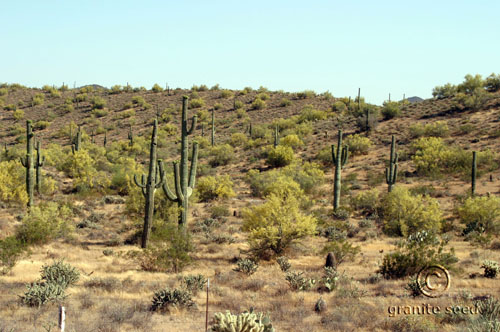
Foothills palo verde
Parkinsonia microphylla
Formerly Cercidium microphyllum. Slow-growing leguminous drought-deciduous tree up to 26 ft. tall with weak spines, photosynthetic green bark and white and pale yellow flower clusters, blooming April to May, one to two weeks later than Blue palo verde (P. florida). Adapted to well-drained, coarse to medium textured soils of upland hillsides and mesas and sites drier than Blue palo verde; up to 4,000 ft. elevation. Occurs within desert scrub and semidesert grasslands and is one of the most common trees of the Sonoran Desert, often codominant within Creosote bush (Larrea tridentata), Triangle bursage (Ambrosia deltoidea) and Brittlebrush (Encelia farinosa) habitats. Primary nurse plant of Saguaro cacti. Widely used for restoration and as a xeriscape landscaping ornamental. Foliage and pods have been used as emergency forage for desert livestock and are sought after by bird and small mammals. Nectar attracts birds and butterflies and is favored by bees. Susceptible to parasitic desert mistletoe which attracts birds to its berries and is a host for Great purple hairstreak butterflies. Co-state tree of Arizona, along with Blue palo verde (P. florida).

Growing Region
- Southwest